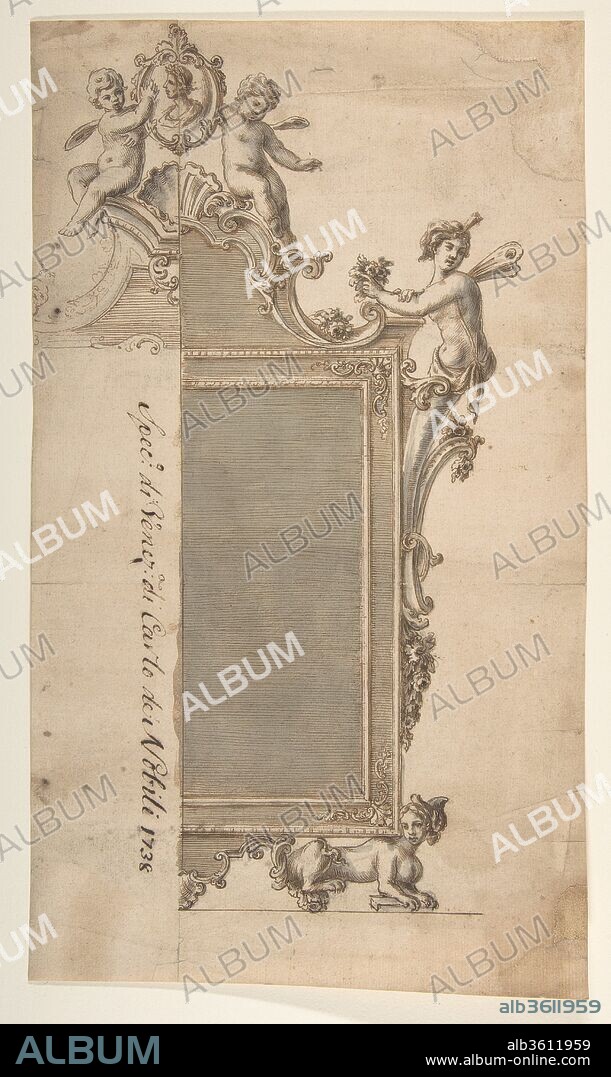alb3611959
GIOVANNI BATTISTA NATALI III. Design for Mirror Frame

|
Add to another lightbox |
|
Add to another lightbox |



Buy this image.
Select the use:

Title:
Design for Mirror Frame
Caption:
Design for Mirror Frame. Artist: Giovanni Battista Natali III (Italian, Pontremoli, Tuscany 1698-1765 Naples). Dimensions: sheet: 13 3/4 x 8 in. (34.9 x 20.3 cm). Date: ca. 1720-40.
This beautiful design for a mirror was made by the Italian artist Giovanni Battista Natali III. He has drawn one half of the mirror in full detail, and only suggested certain details for the other half where changes to the design could be considered. The mirror is rendered in a late Baroque style, which places it relatively early in Natali's career. His later designs show the emergence of the new Rococo style which culminates in his involvement in the production of the so-called Salottino di Porcellana (Small Porcelain Room) for the Queen of Naples, Maria Amalia of Saxony. Not much is known about Natali's career, which can partly be credited to the fact that he was active in various art disciplines in different cities throughout Italy, making it difficult to trace his oeuvre. He was, moreover, also involved in the production of artworks of an ephemeral nature, such as set pieces for festivals and the theater which were usually destroyed after they had served their purpose. The 18th-century Italian inscription on this sheet attributes its design to the Venetian artist Carlo de' Nobili, demonstrating that even though in this case the work of art has survived, its author was forgotten relatively soon after its creation.
Technique/material:
Pen and brown ink, brush with gray and brown wash, over traces of graphite or black chalk
Museum:
Metropolitan Museum of Art, New York, USA
Credit:
Album / Metropolitan Museum of Art, NY
Releases:
Image size:
2522 x 4225 px | 30.5 MB
Print size:
21.4 x 35.8 cm | 8.4 x 14.1 in (300 dpi)
 Pinterest
Pinterest Twitter
Twitter Facebook
Facebook Copy link
Copy link Email
Email
